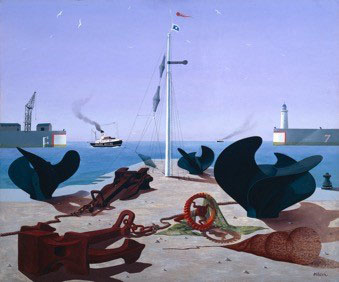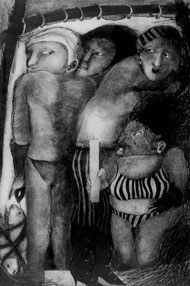About the project
Understanding Displacement Aesthetics and Making Change in the Art Gallery with Refugees, Migrants and Host Communities.
This three-year AHRC project investigates the humanitarian aspirations of art and craft, and analyses the impact of artistic responses to displacement and refugeedom.

The project aims to understand how and in what forms 'displacement aesthetics’ emerged in response to the Second World War and its aftermath, especially in art and craft practices and in exhibitions in international museums, UN sponsored welfare programmes and UNESCO’s cultural work.
Challenging the patterns and practices of ‘displacement aesthetics’, the project seeks to amplify the voices of refugee and migrant artists and curators. It will examine how they have sought to overturn displacement aesthetics and critique its discourses, and can offer new ways of seeing not necessarily defined by or confined to the performance of refugeedom or the experience of displacement.
In doing so, this collaborative project seeks to bring communities together to create resilience through the shared enterprise of making significant institutional changes in two major art spaces in Manchester.
Challenging the patterns and practices of ‘displacement aesthetics’, the project seeks to amplify the voices of refugee and migrant artists and curators.

The project has three research strands:
Historical and Contemporary Forms of ‘Displacement Aesthetics’ - in two key periods of displacement and forced migration in the wake of the Second World War AND from 2002 to the present-day.
Art-Making and Art Galleries - examining local and international art collections and artistic practices, and their interventions into ‘displacement aesthetics’. Through our partnership with Manchester Art Gallery and the Whitworth Art Gallery, the project aims to make significance curatorial and infrastructural changes in the art institution.
Art as Cultural Resilience - studying the impact of these changes arising from a creative entrepreneur programme for artists and curators (delivered by the internationally renowned arts NGO In Place of War (IPOW); gallery collections research programme with communities; a participatory arts exhibition with the Whitworth Art Gallery; commissioning of new works; and the permanent redesign of a key ‘welcome space’ in Manchester Art Gallery.
The project will also connect with galleries, curators and artists around the world, especially in Greece, Australia and the Middle East. Alongside conferences and workshops, it will also produce a book that takes account of best practices in the international arts community and assesses the art and curating projects in Manchester.
